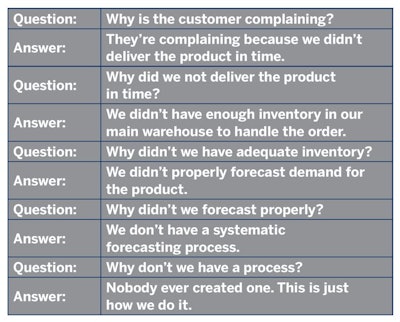
 Paul Reilly
Paul ReillyWhat If You Treated Customers Like Prospects?
In a recent study, we asked salespeople about their efforts to create more value for existing customers. It turns out that only 40 percent of salespeople proactively look for ways to create more value for existing customers. This number is surprisingly low. Imagine telling a prospect, “Once you become a customer, there’s only a 40 percent chance I will proactively create more value for you.” I’m guessing that prospect wouldn’t feel compelled to become a customer.
In sales, we have to make big promises and then deliver on those promises. Delivering on big promises requires hard work and commitment. Consider how hard you’re working for your existing customers. Are you working as hard to keep the business as you did to get the business?
Most salespeople wait for things to happen instead of expending effort to make things happen. Salespeople wait for a competitive threat or wait for a customer complaint before they add more value. All this waiting puts salespeople in a responsive state versus a proactive state, in which they only add more value in response to some other event.
There are several opportunities to create more value for your customers. Some ways are more obvious than others. The more value you create, the less opportunity you create for the competition.
In Value-Added Selling, this ongoing effort to create more value is called tinkering. Tinkering is tweaking your solution and re-creating value for the customer. It is proactively looking for ways to enhance the way you serve customers, and treating your best customers as if they were your best prospects, because they are for the competition. Here are some tips to help you tinker with your solution and create more value:
Conduct a Value Audit
Imagine auditing the value you deliver with the same intensity that the IRS would audit your finances. I’m guessing you’d find additional ways to add more value to the customer experience. A value audit is a practical way to check on yourself vis-à-vis the customer’s expectations. In a value audit, you’re checking to make sure you’re meeting the customer’s expectations and looking for new opportunities to add value.
Conducting a thorough value audit begins with challenging the status quo. It’s critical to challenge your assumptions, and to question any policy, process, or methodology that is deemed unchangeable. Don’t be afraid to challenge the customer. Show them new and beneficial ways to change.
As part of your value audit, conduct a thorough needs analysis. Your customer’s needs will change over time. If you were to call on a customer as if it were the first time you’ve met, I’m guessing you’d ask a few more questions, and you might uncover additional needs that you didn’t know existed.
To give you a better view of your customer’s needs, bring along one of your colleagues for a joint call. In a recent seminar, a salesperson admitted that he would become complacent after managing the same account for several years. He was struggling to find ways to create more value, so he decided to bring along a colleague to help discover new ideas. During these joint calls, his colleague would ask several questions, and together they found new ways to create value. It’s amazing how a fresh set of eyes on an existing customer can find new opportunities.
Conduct a Failure Analysis
Have you ever messed up the customer experience so badly you thought, “There’s no way they’ll ever do business with us again”? If you’re like most salespeople, the answer is “yes.” However, these service failures represent one of your greatest opportunities to build loyalty.
In John Goodman’s Strategic Customer Service, he researched the effect of service failures on customer loyalty. Goodman found that a customer who complains, but is satisfied with the company’s resolution of the complaint, becomes more loyal than the customer who didn’t experience the failure. Service failures represent an opportunity to earn loyalty.
To effectively resolve complaints, you must first understand the root cause, or the underlying issues, that led to this failure. There are several ways to reveal the root cause. Begin with the question "why". In continuous improvement initiatives, many organizations will ask “why” five times to get to the root cause. For example:

Asking “why” five times can lead to the root cause. When you fix the root-cause issue, you will also solve additional problems that you didn’t know existed.
Markets mature and become saturated. Different solutions will develop similar properties and attributes. The after-market service you offer will converge with the competition. Competitors are constantly evolving and trying to get better. Those who continuously evolve in the marketplace will be market leaders.
Tinkering is about the pursuit of excellence. This carries with it a positive sense of insecurity that will motivate you to act. And when you experience success, enjoy it, but realize that it will not be enough to carry you into the future. Remember the famous words of Intel founder Andy Grove: “Success breeds complacency. Complacency breeds failure. Only the paranoid survive.”
Paul Reilly is president of Tom Reilly Training and co-author of Value Added Selling, fourth edition.
A version of this article appears in the March 2019 issue of Industrial Distribution.























